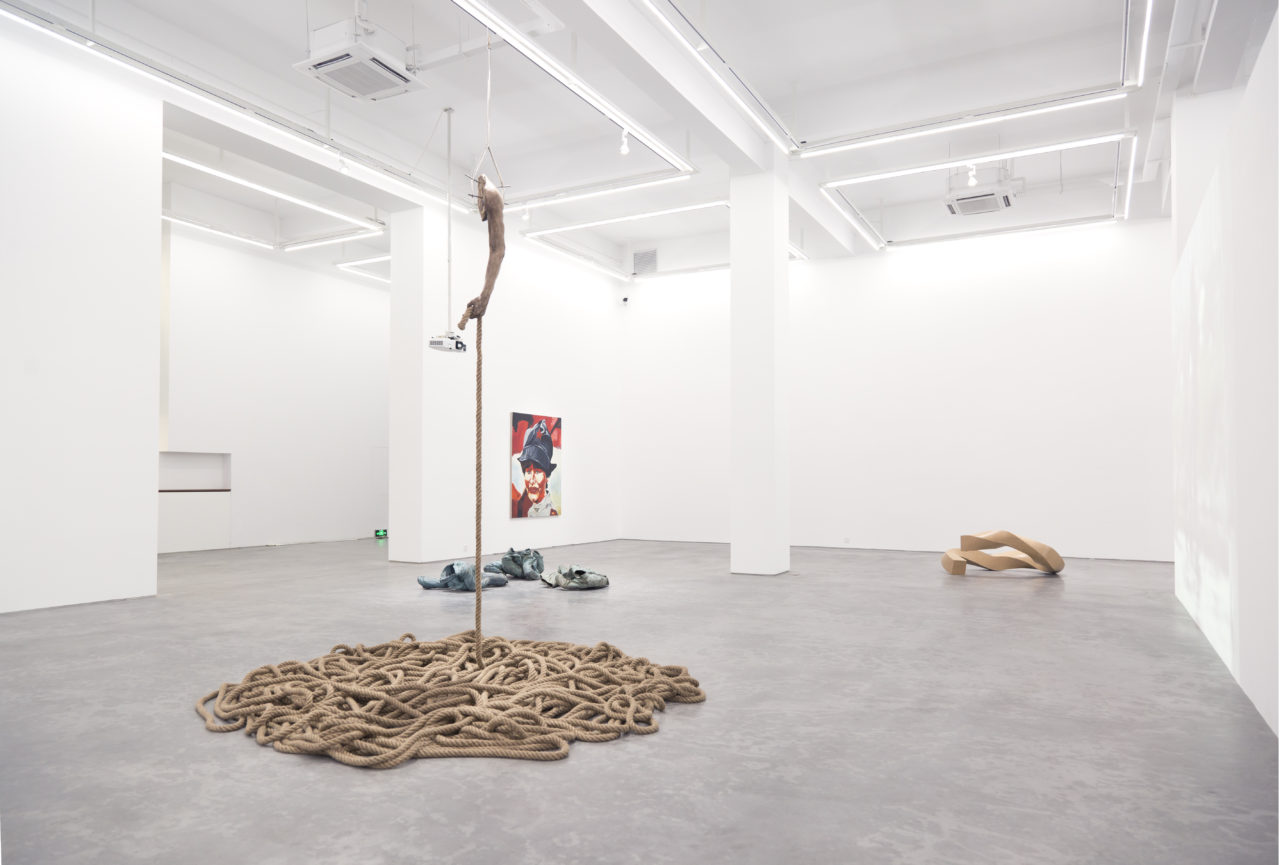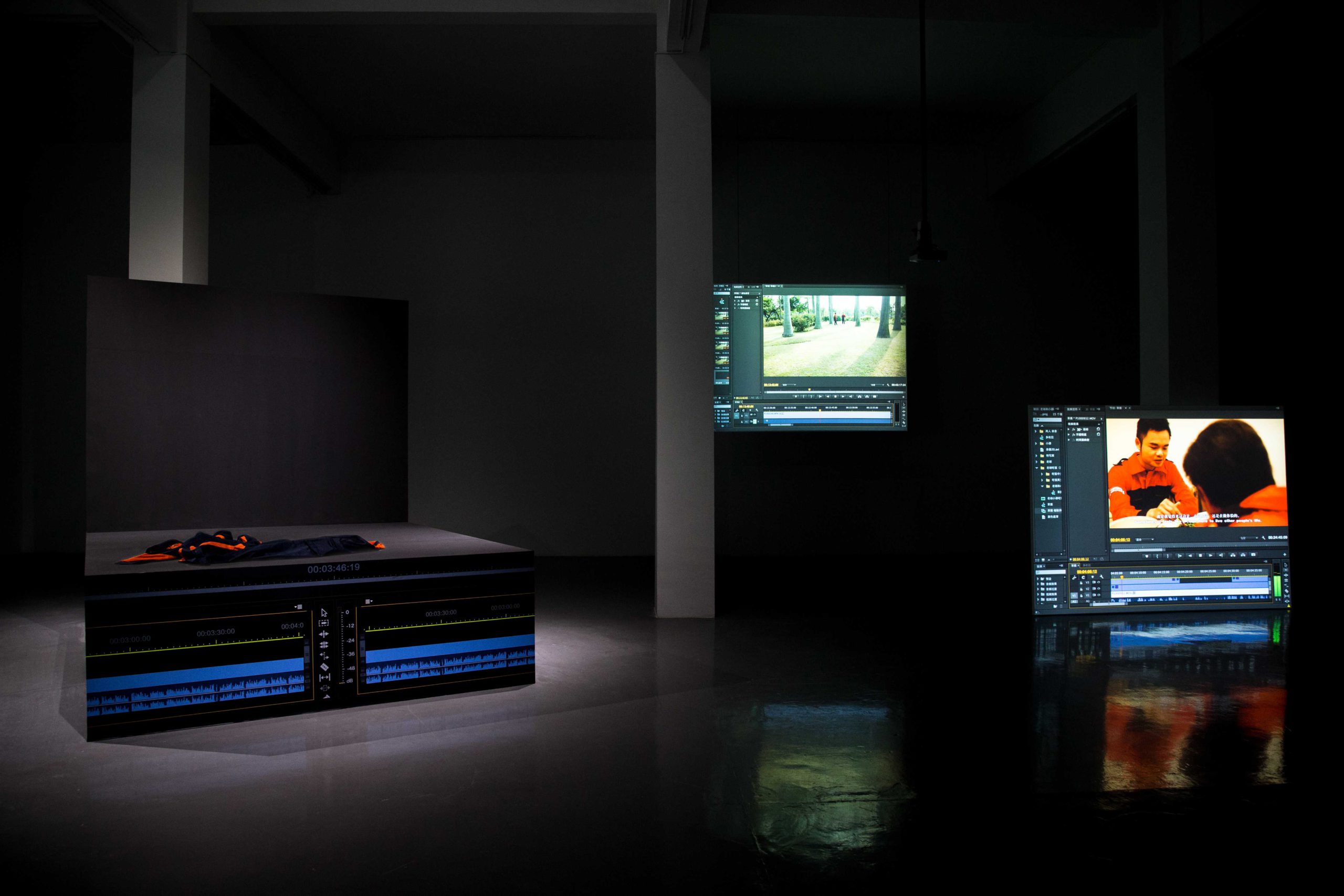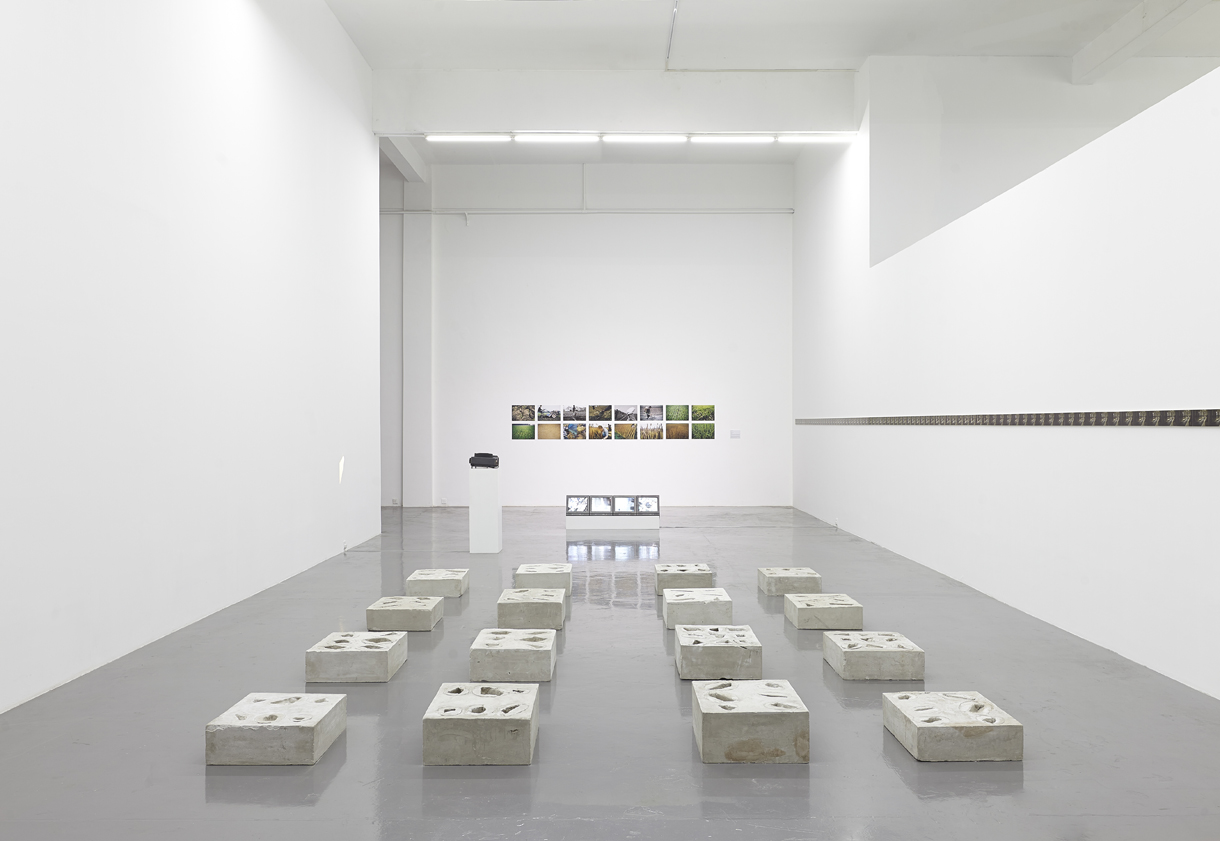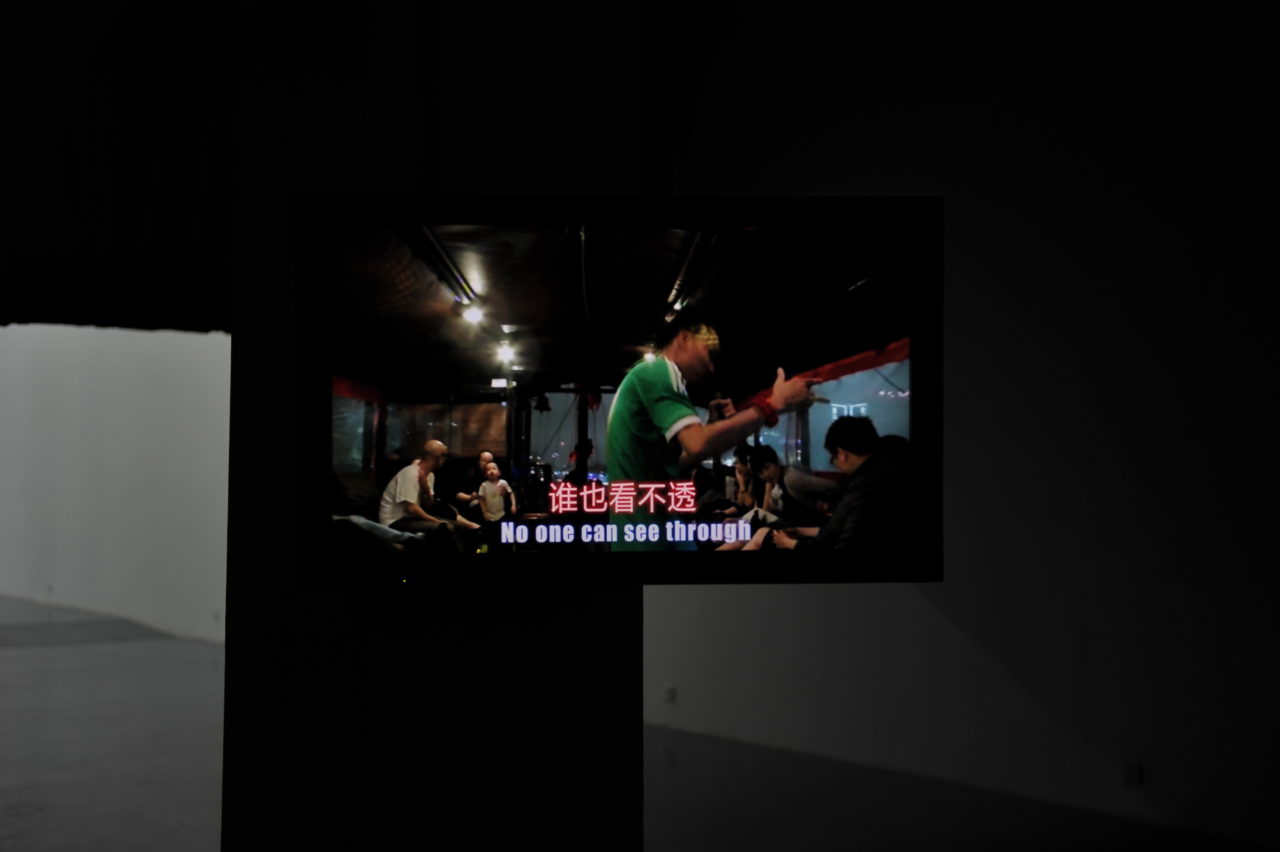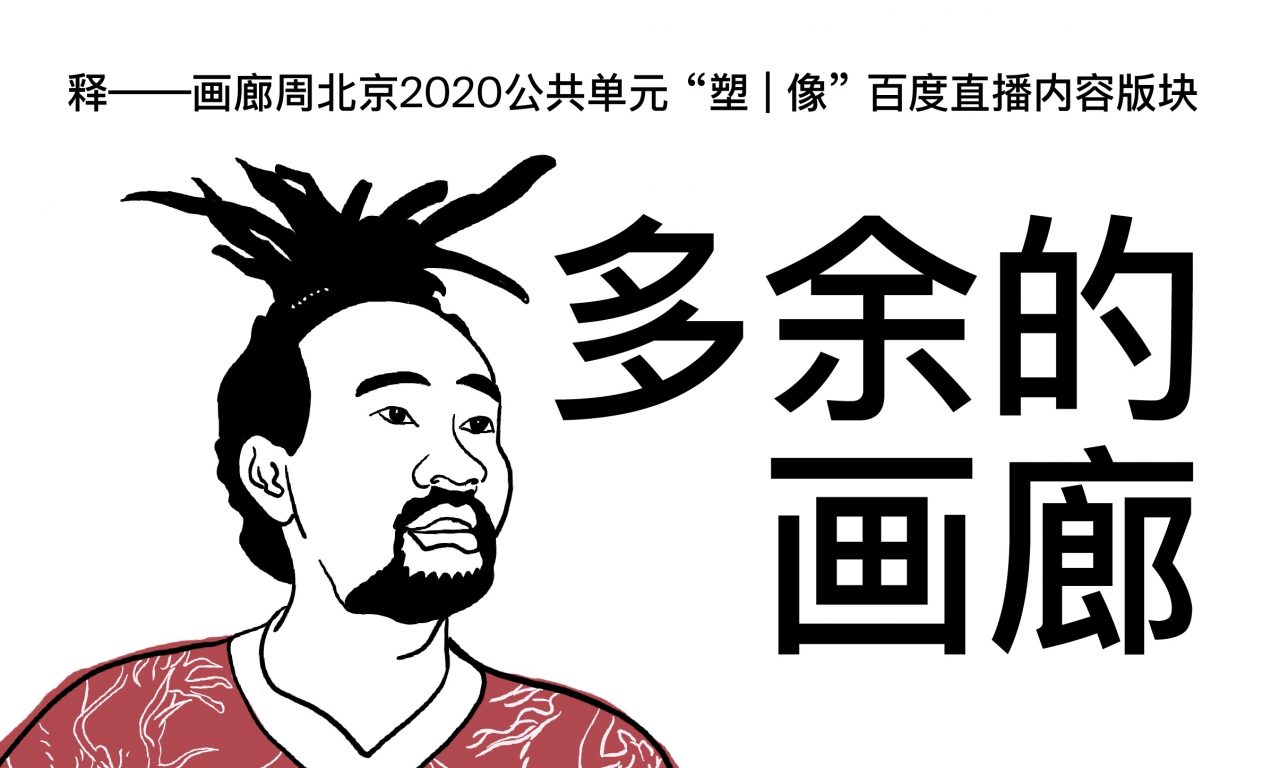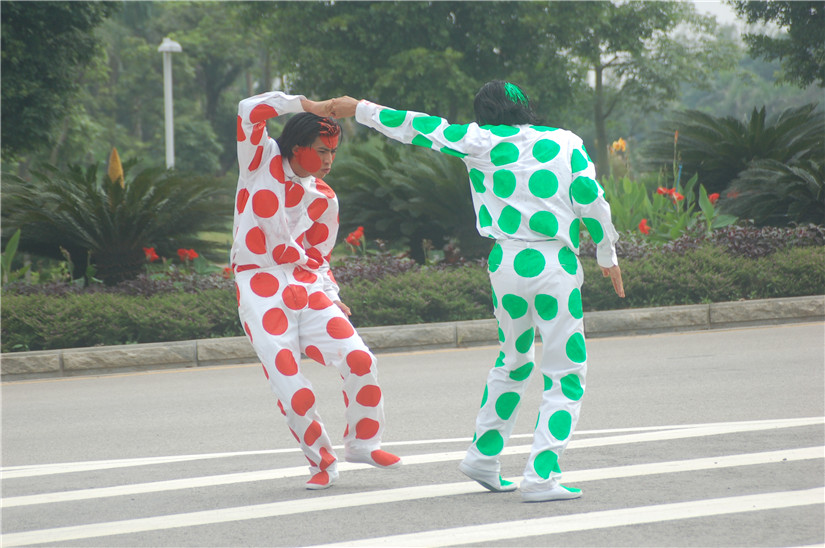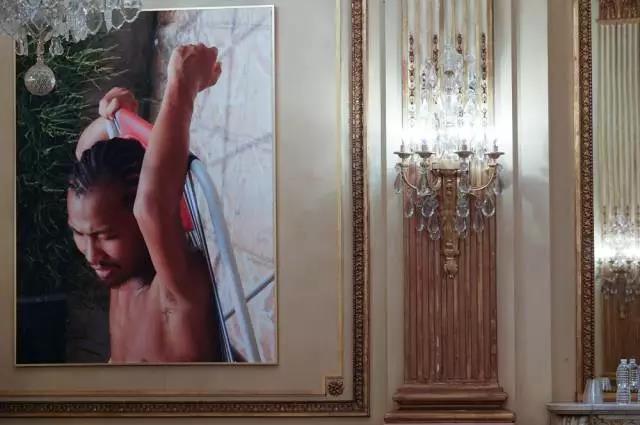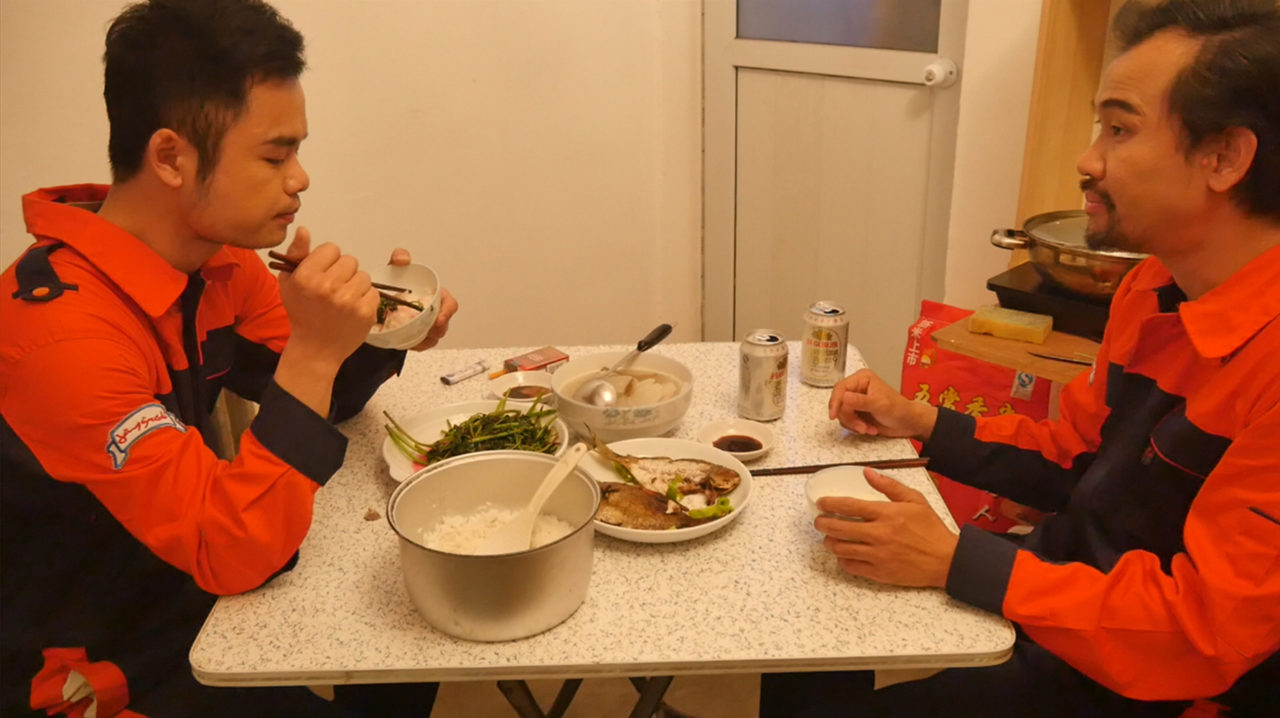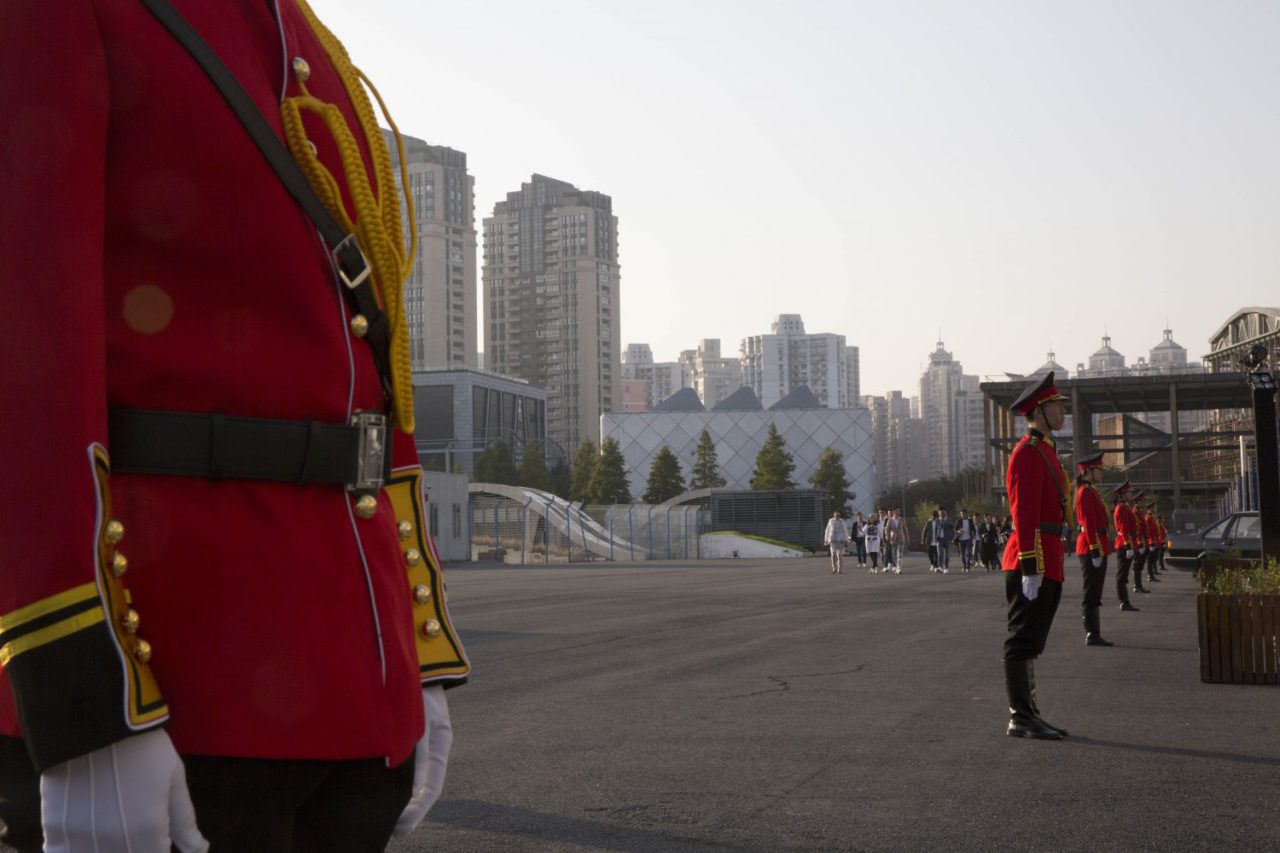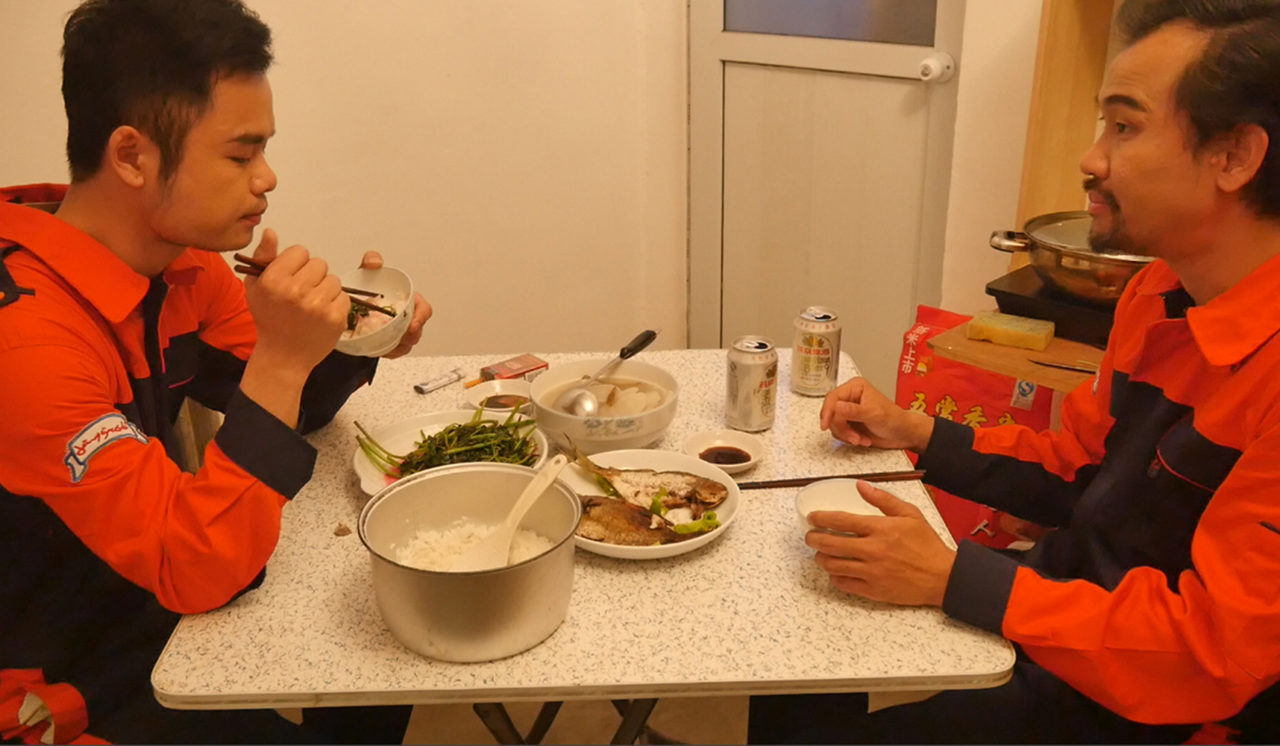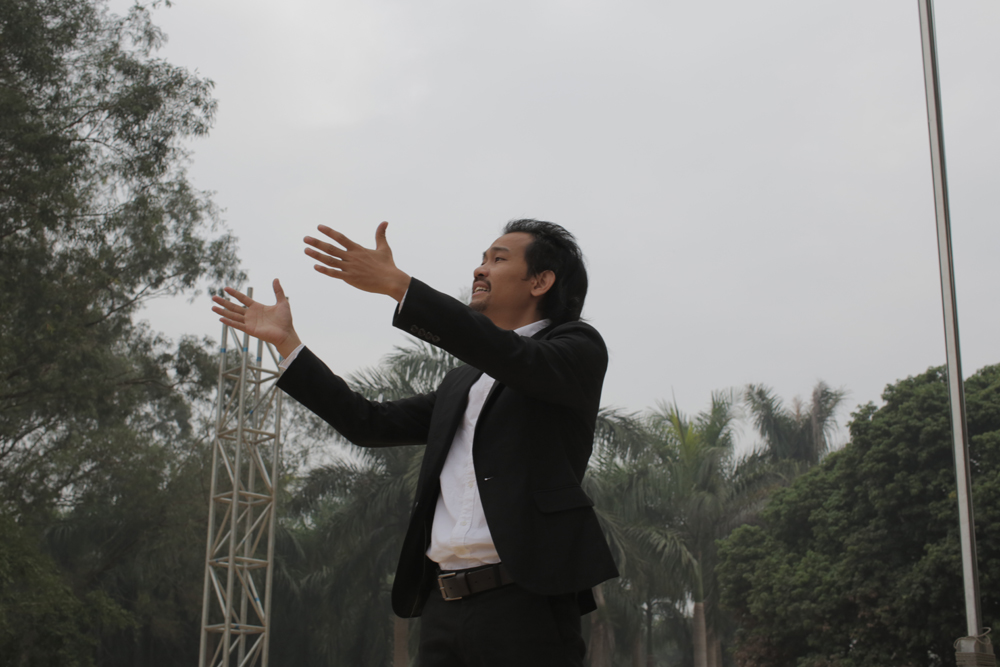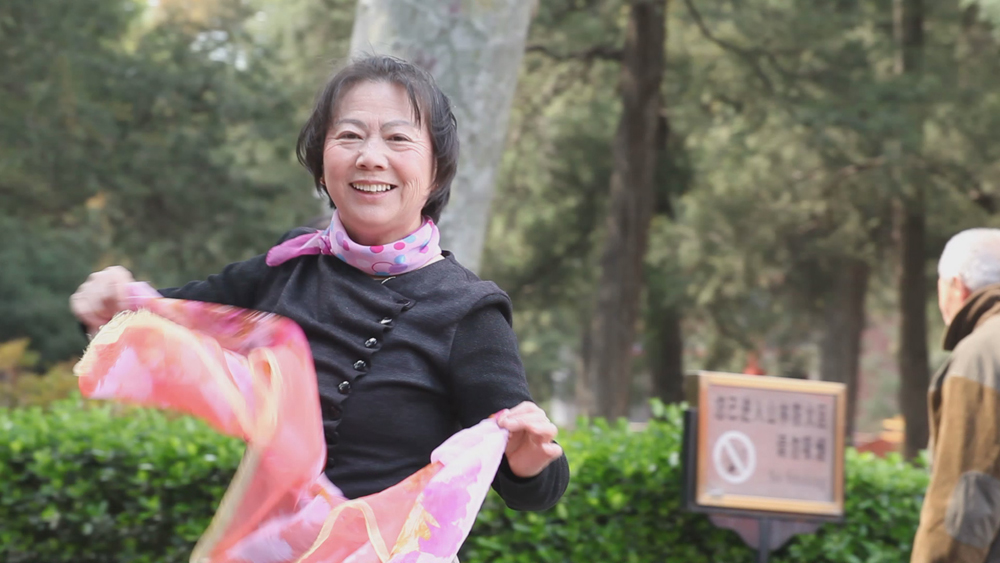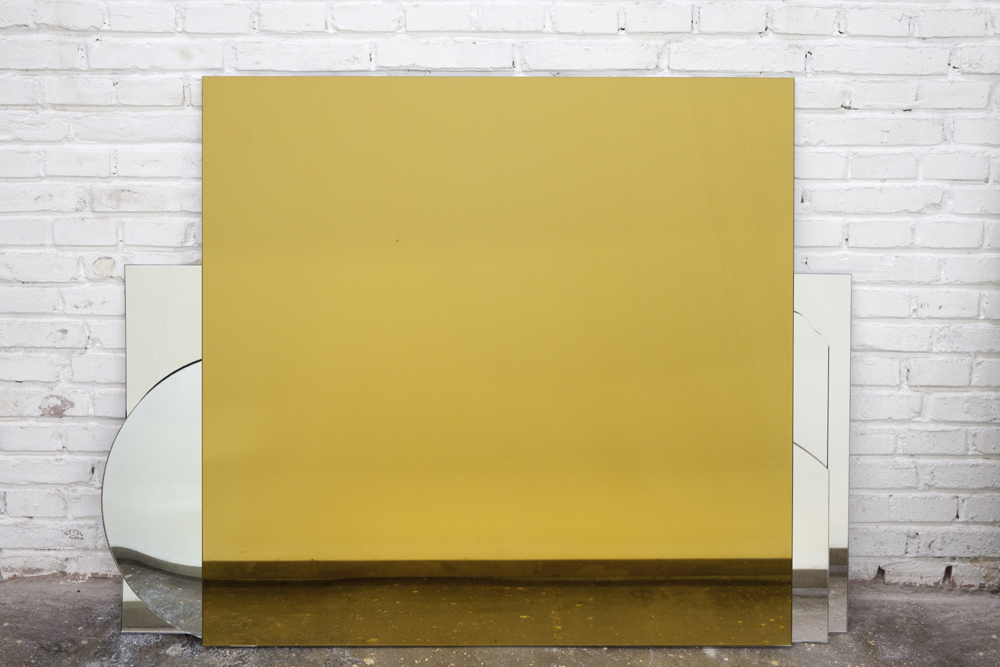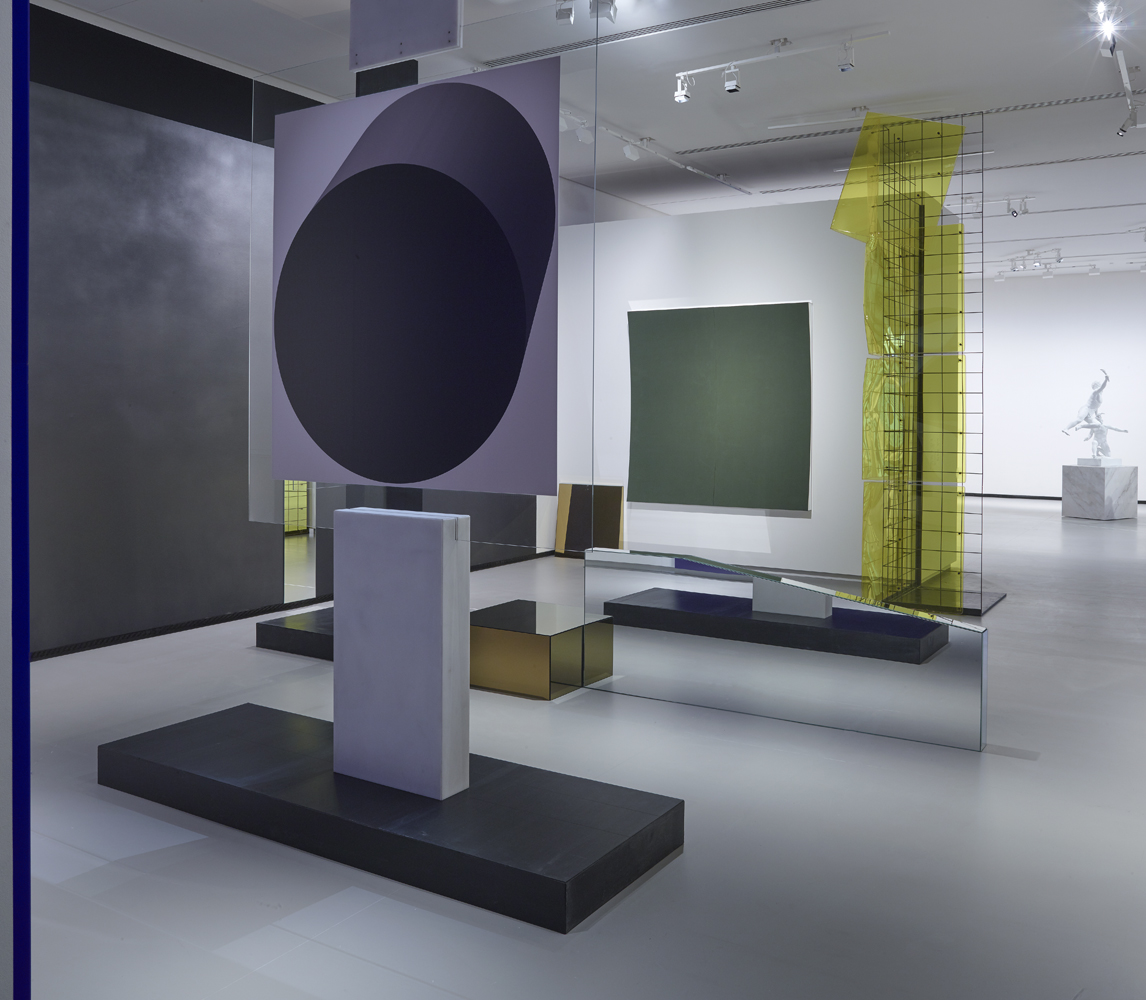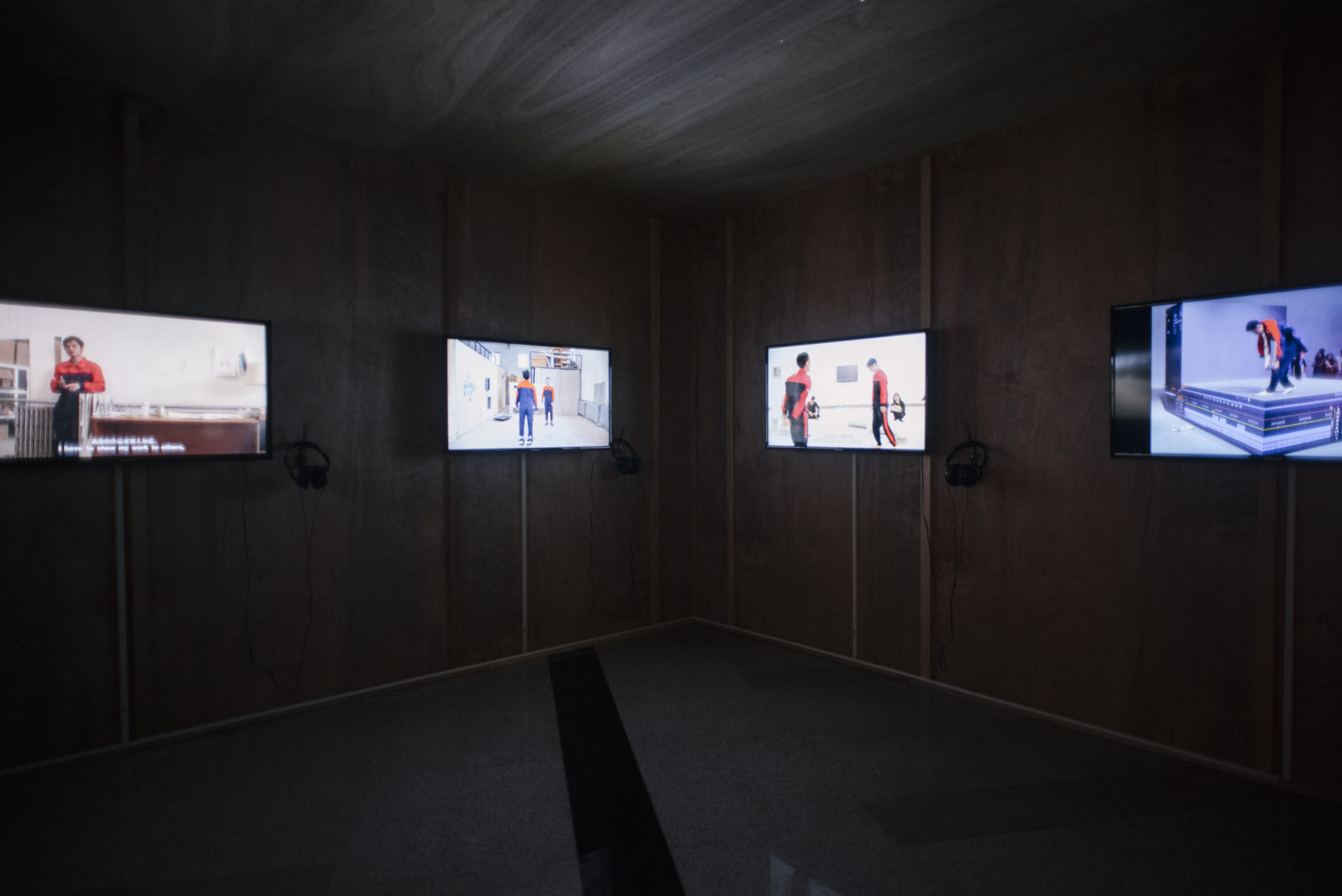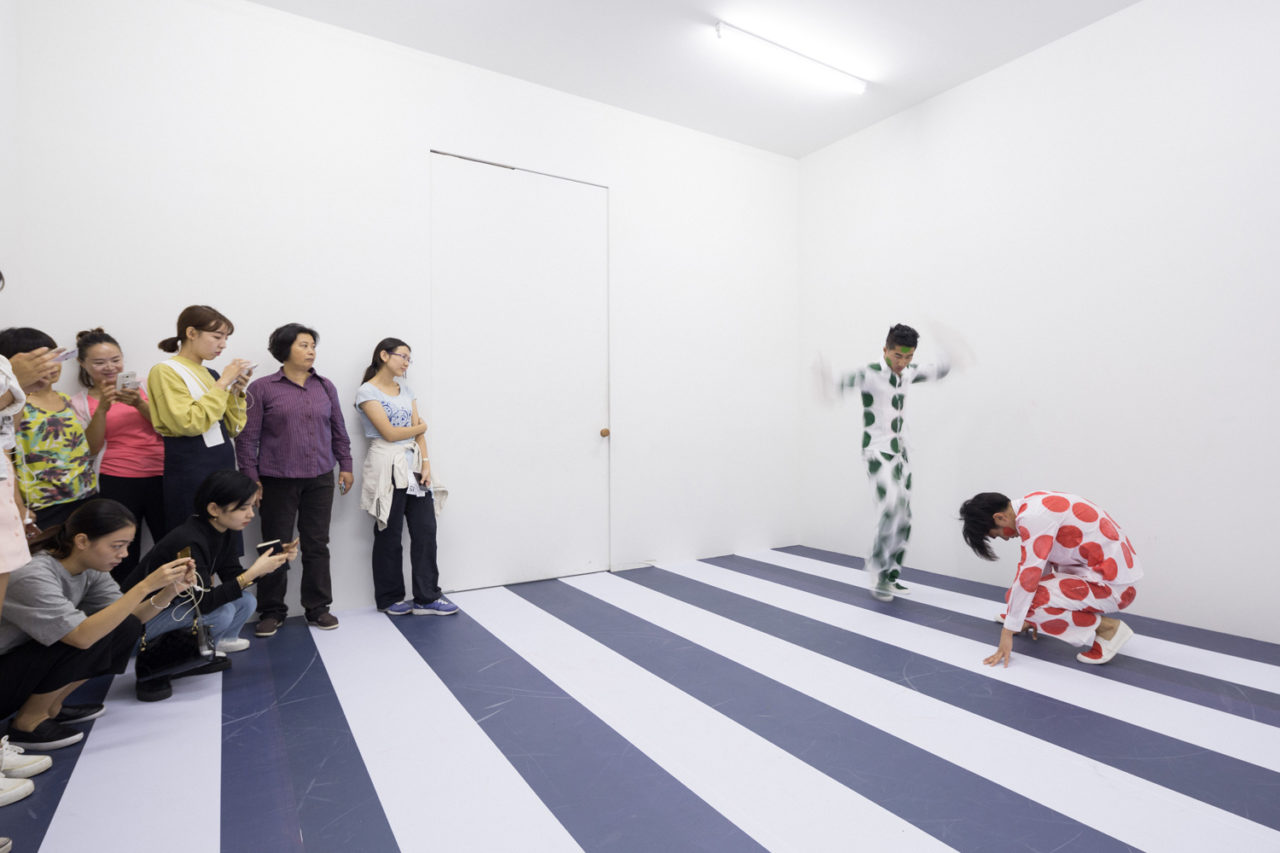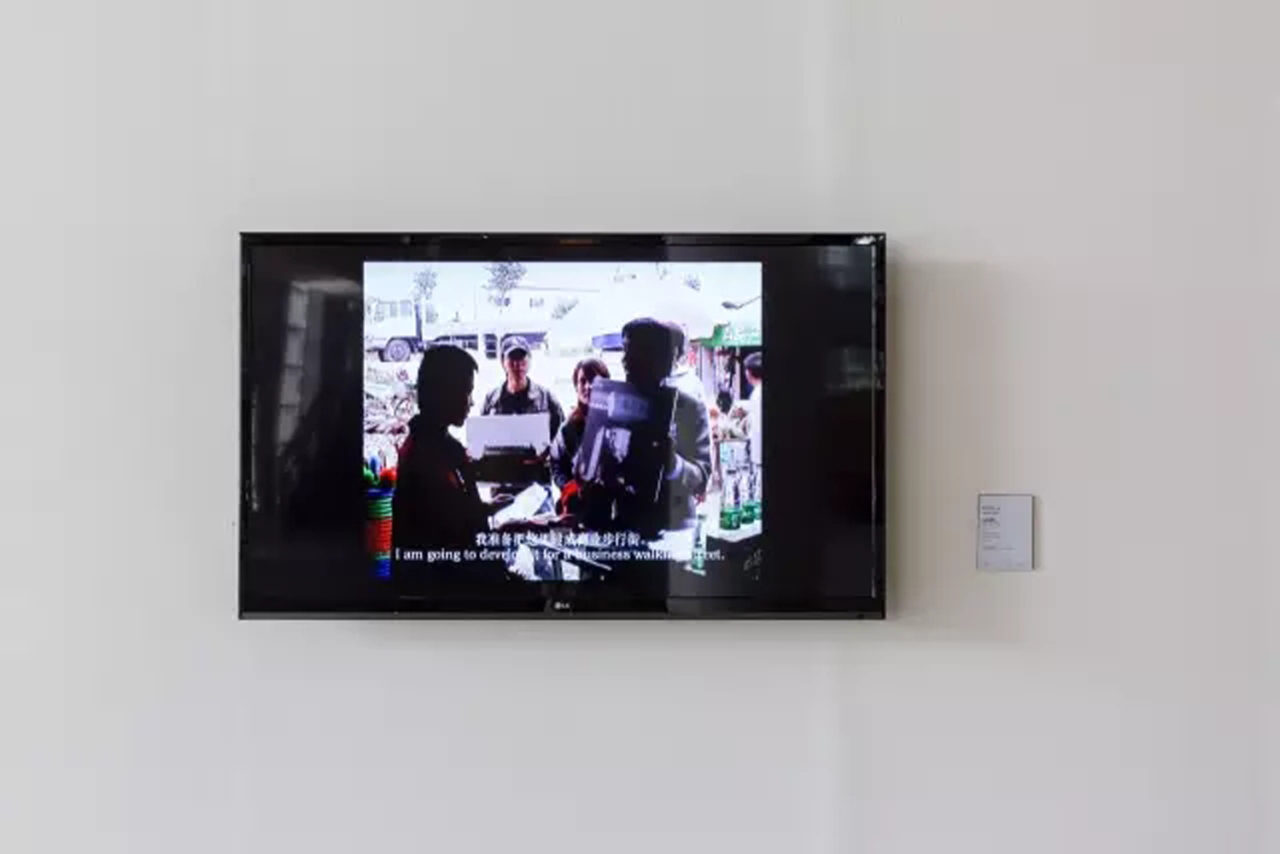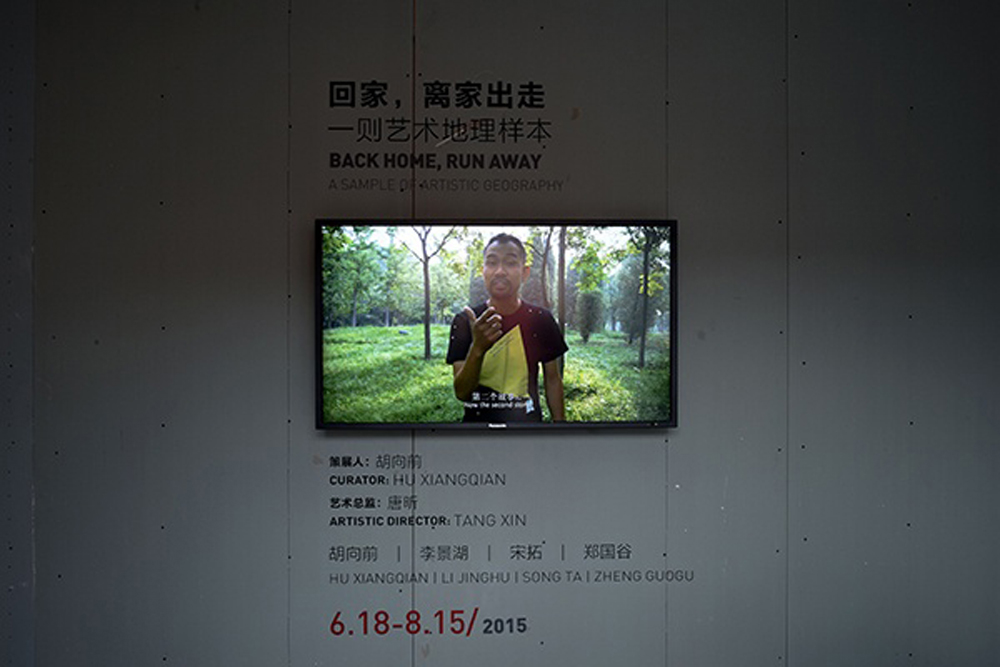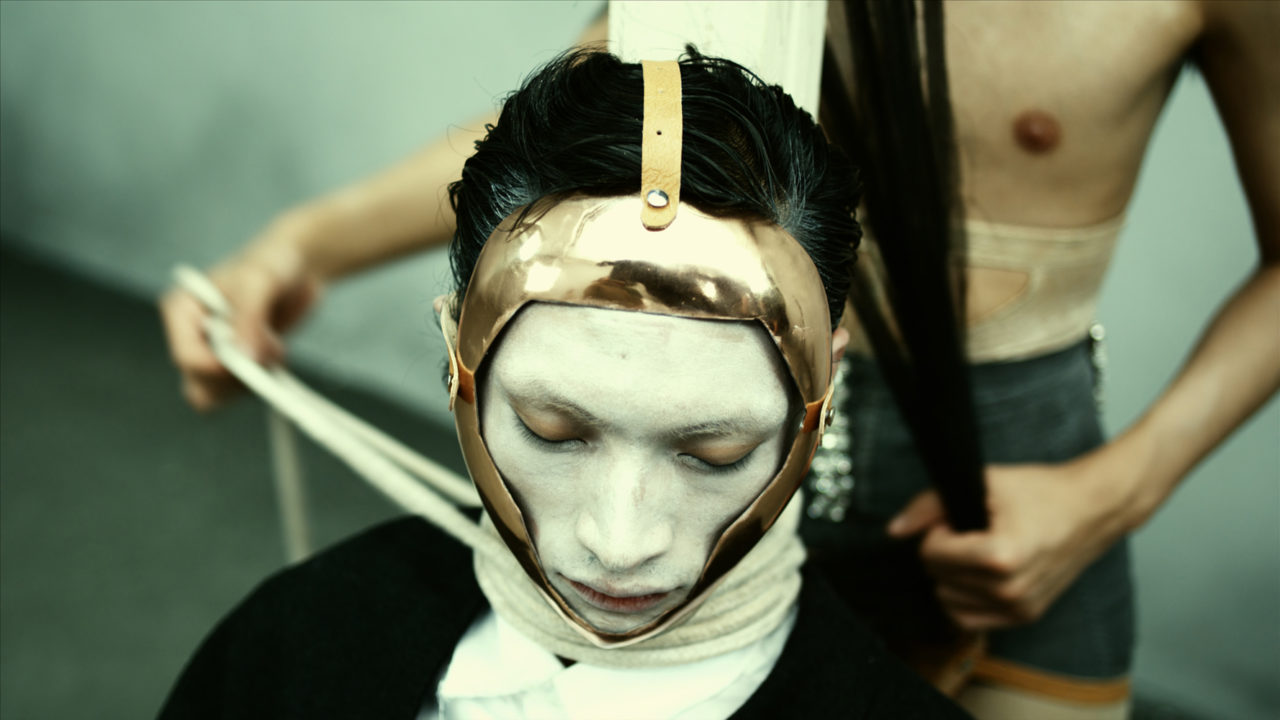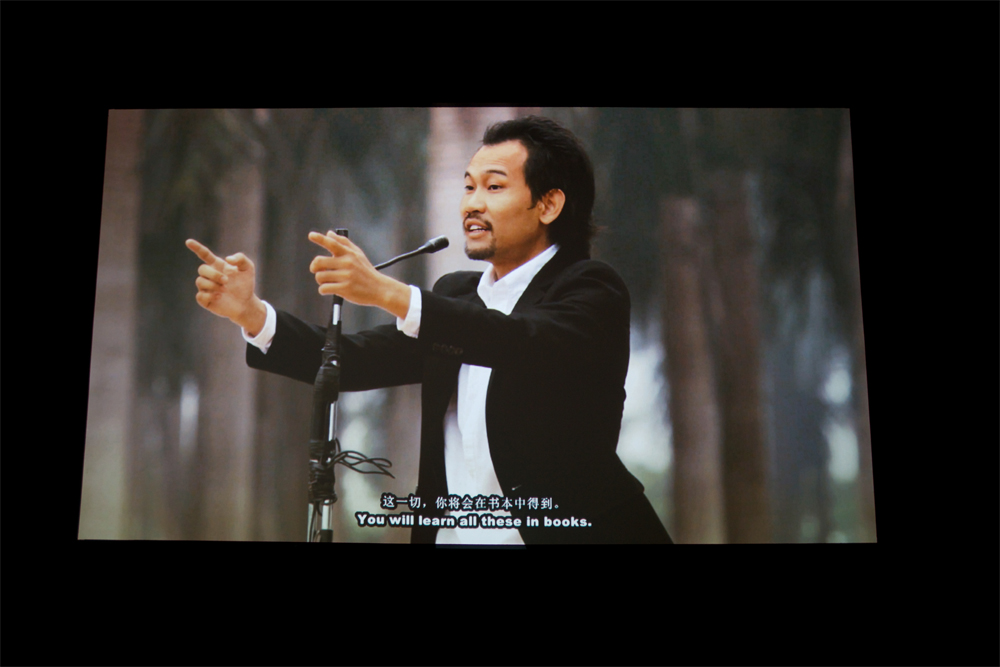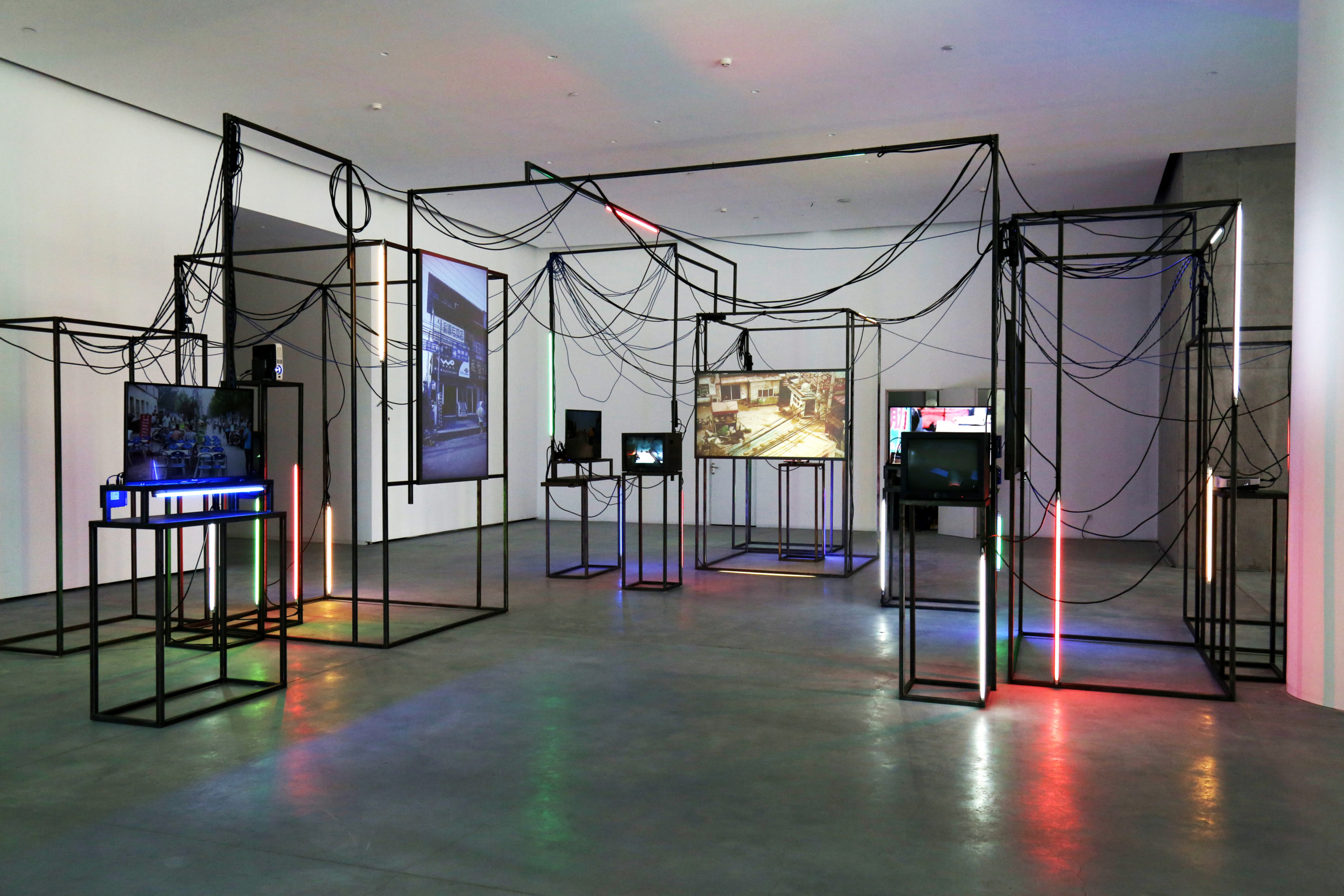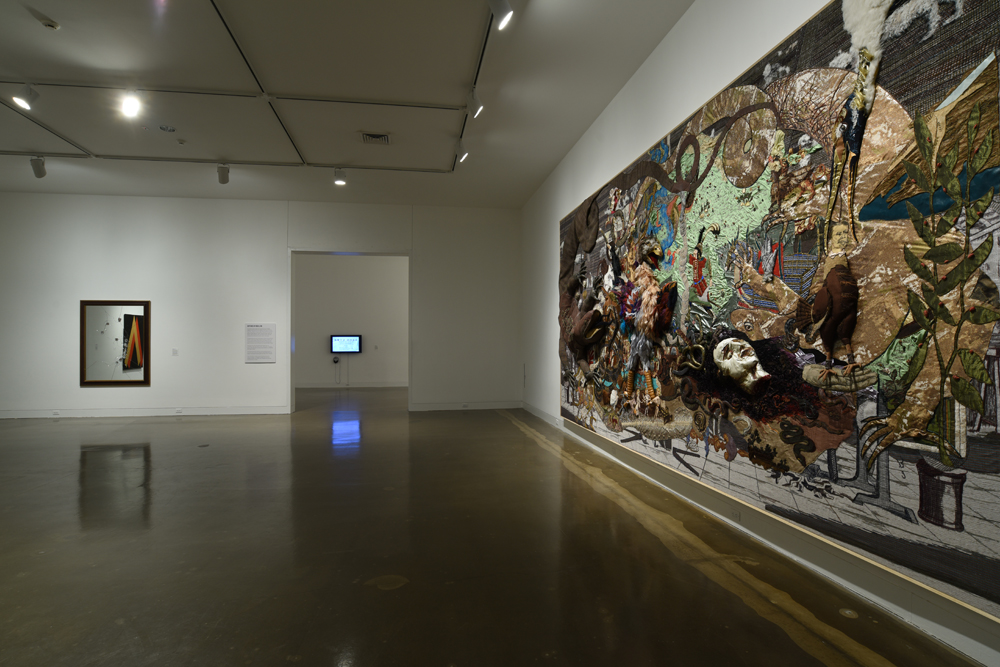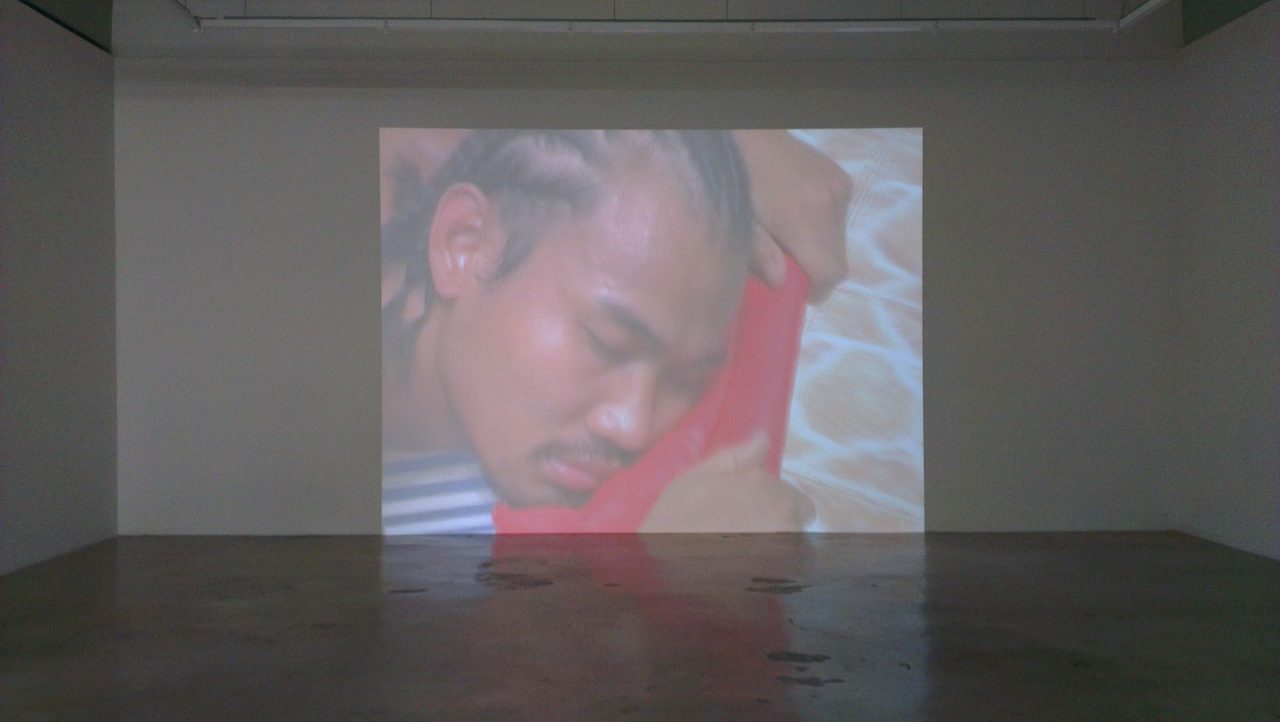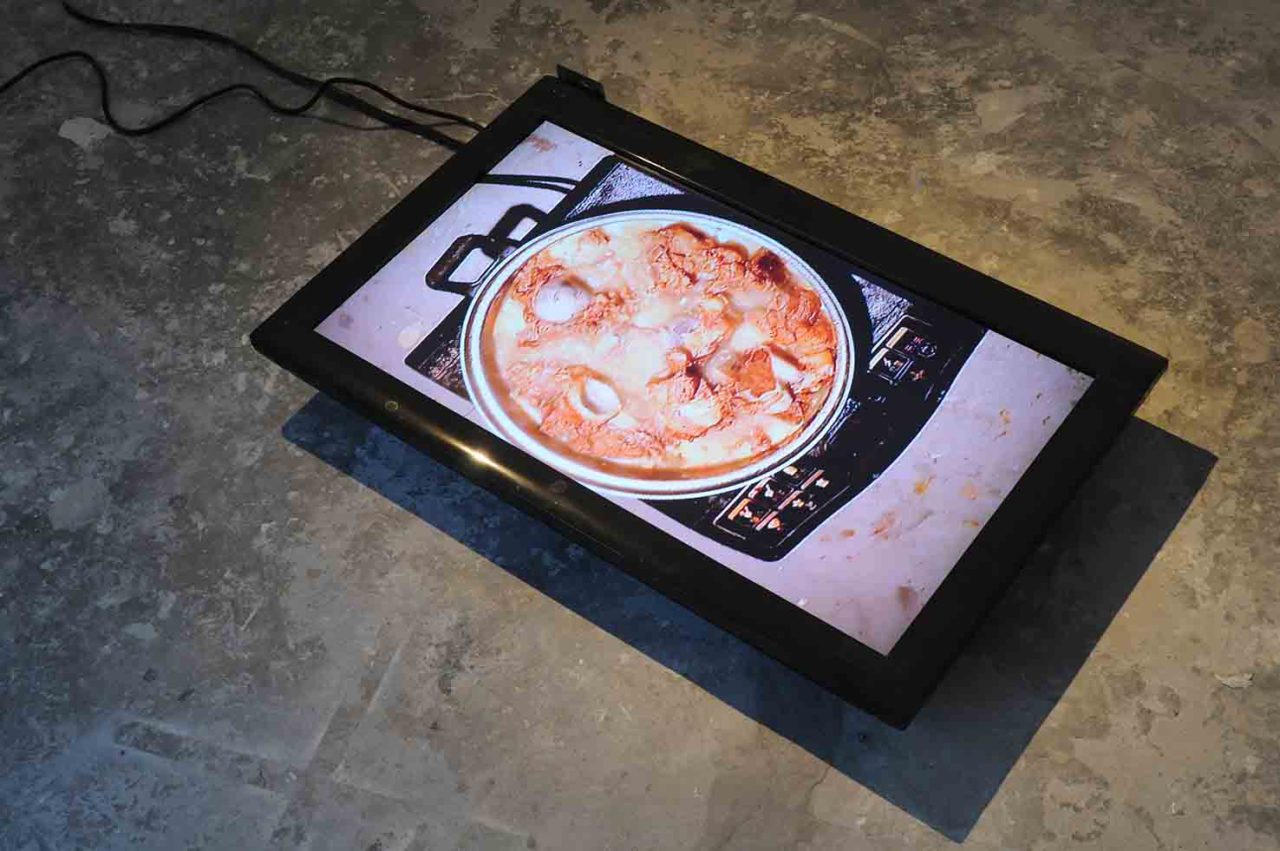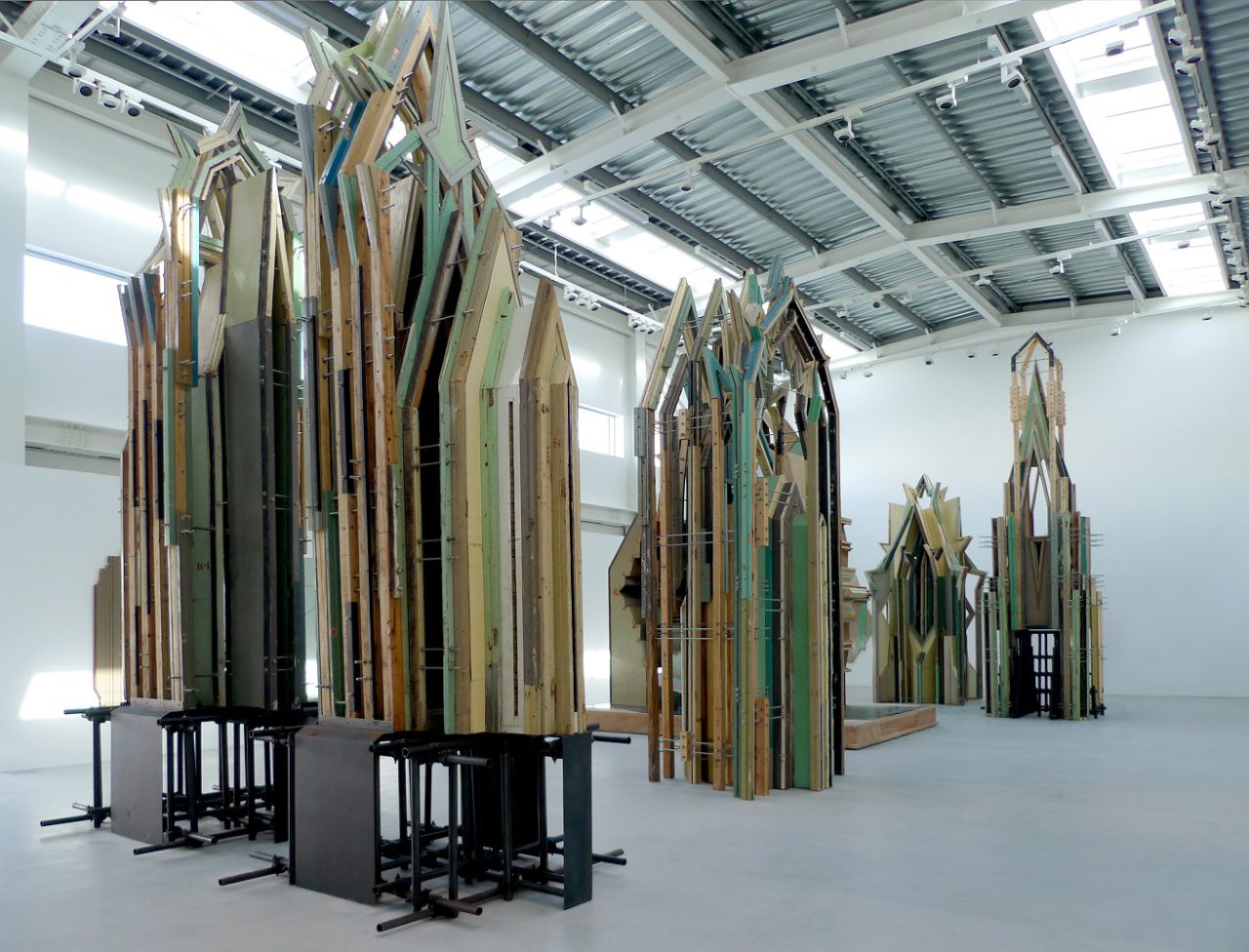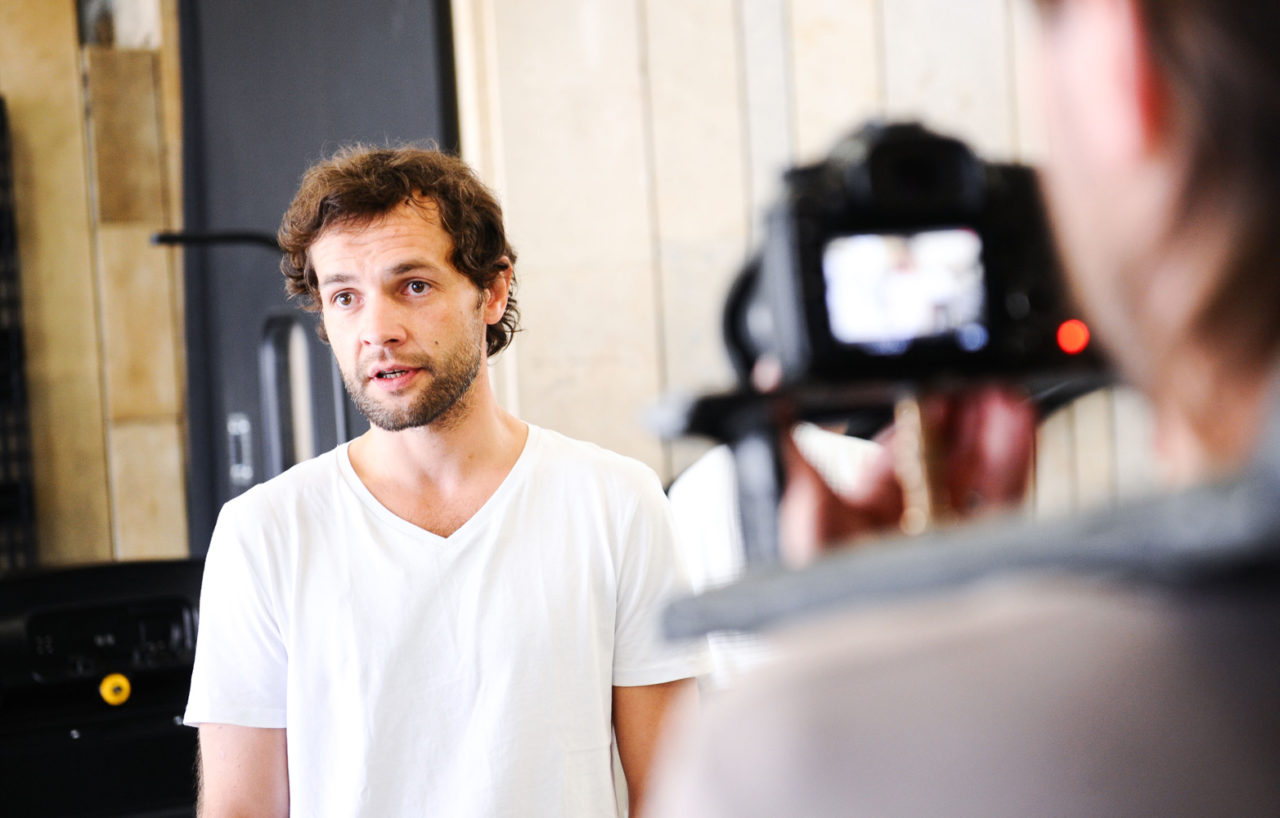-
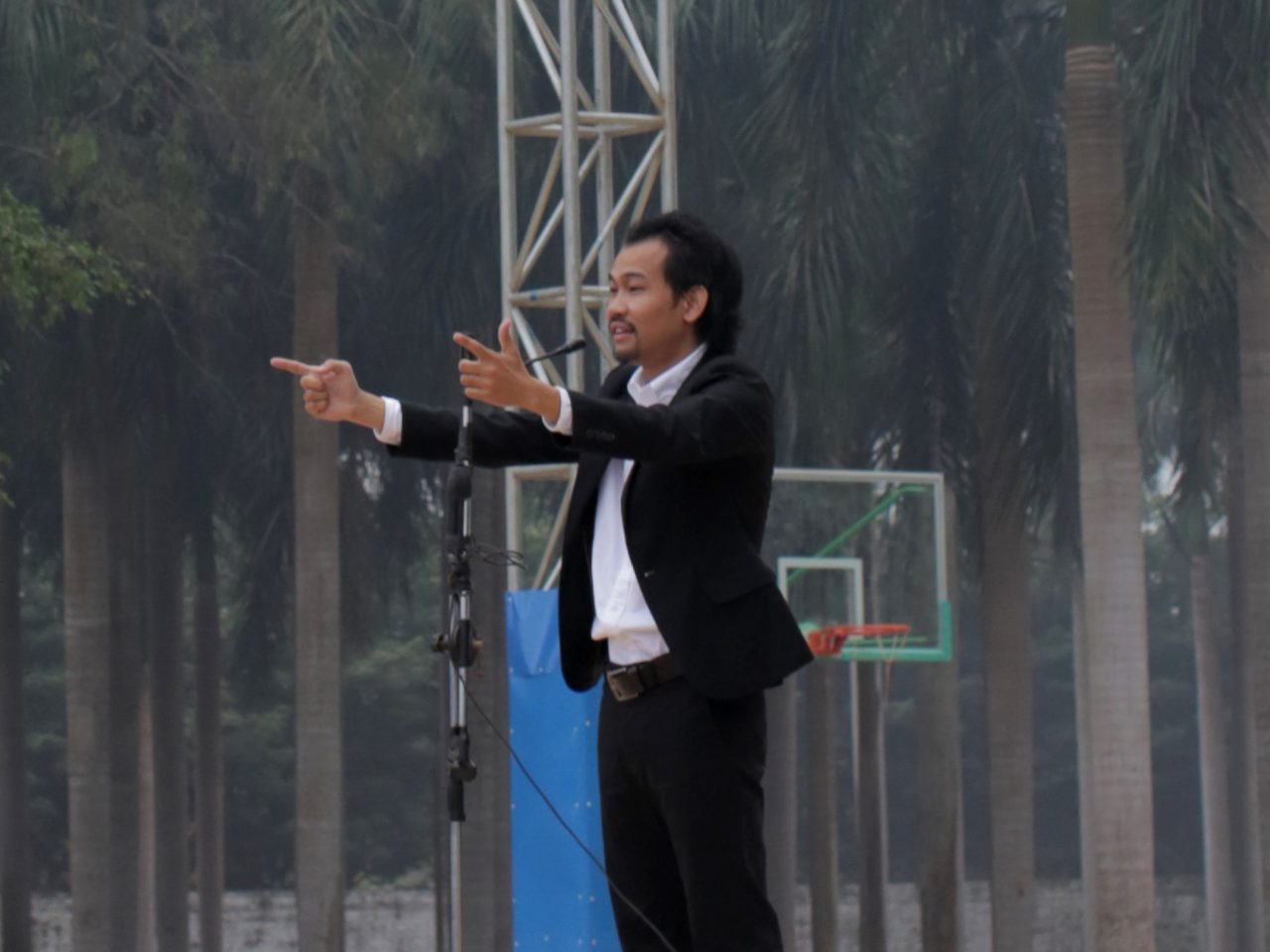
Speech at the Edge of the World
Video still
2014
Single channel HD video, color, mono sound
12 minutes 30 seconds
-
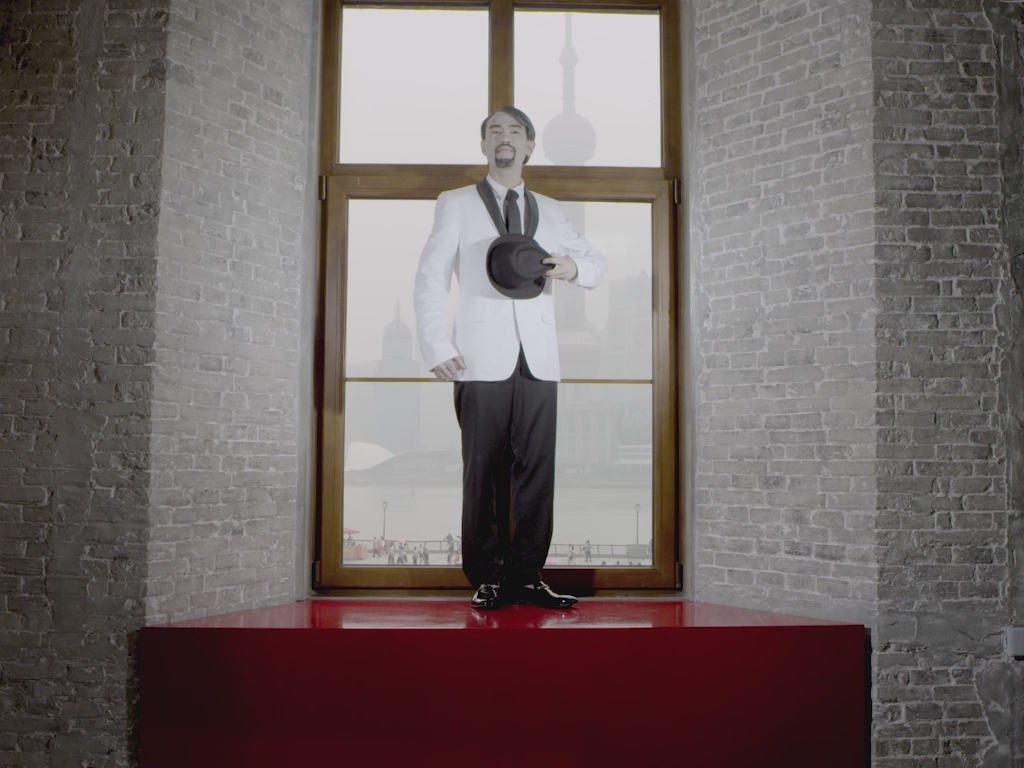
Acting out artist
Video still
2012
HD video 高清录像
14 minutes 15 seconds
-
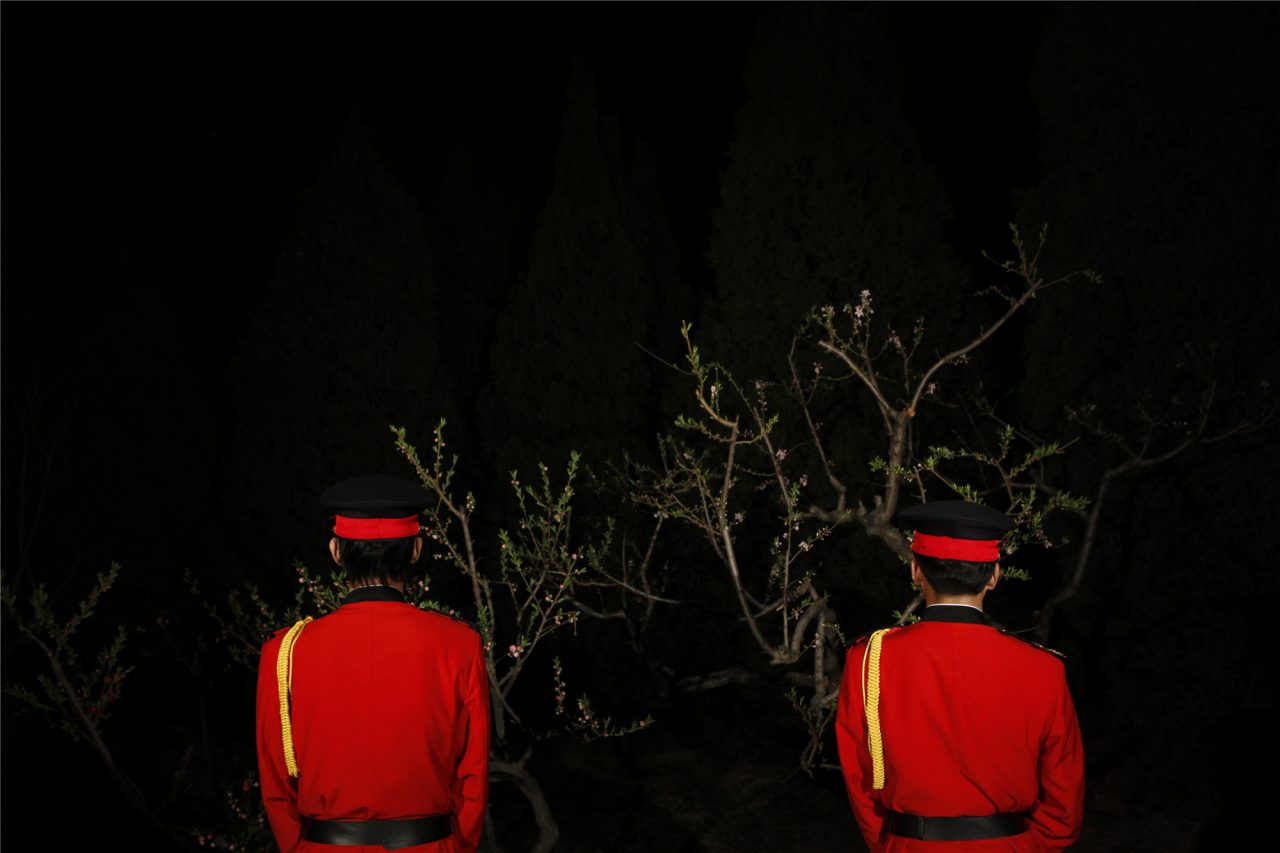
The Labor Song I Night
Video still
2012
SD video
7 minutes 12 seconds
-
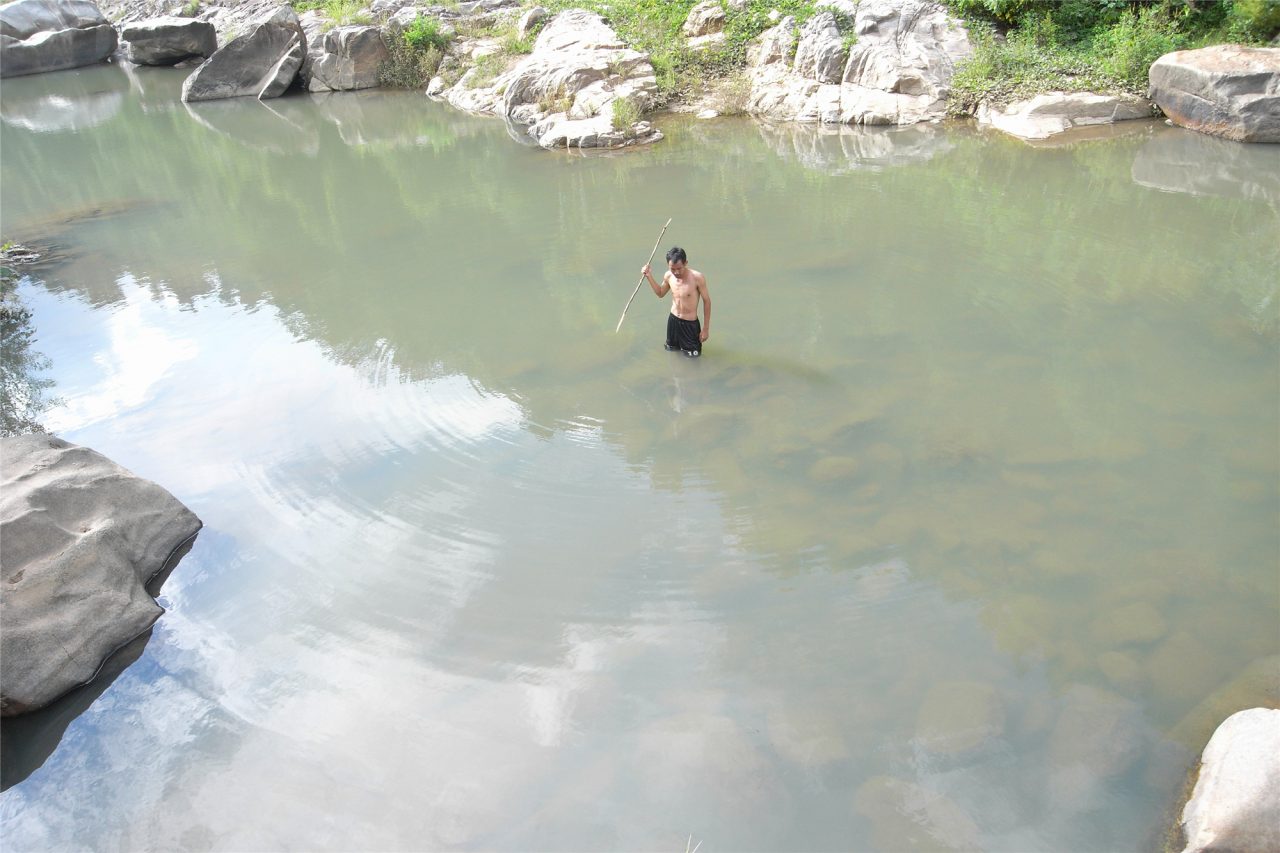
Superfluous Knowledge
Video still
2010
Video, performance
26 minutes 10 seconds
-
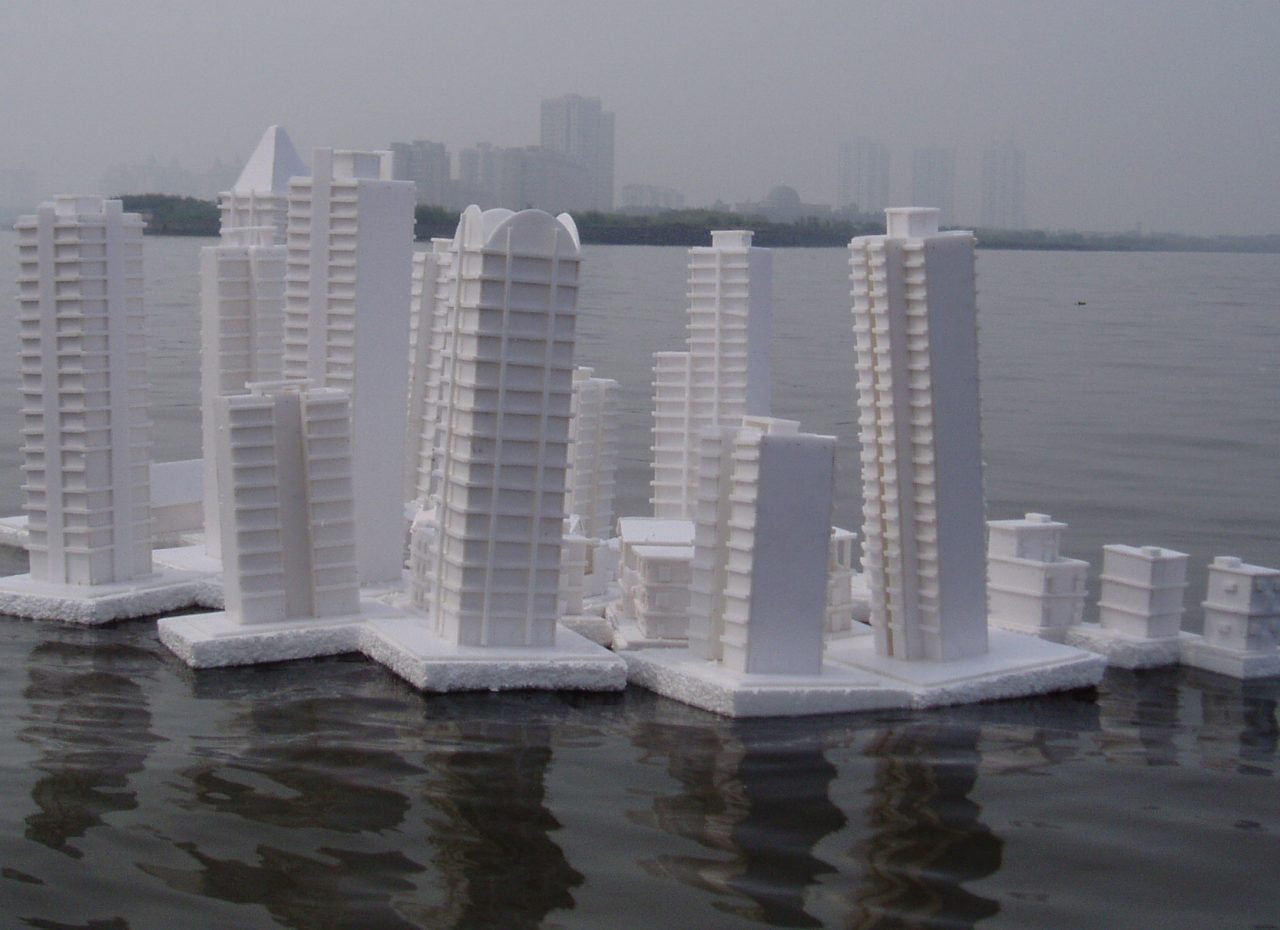
Trend Blindly
Video still
2005
Video, performance
2 minutes 37 seconds
-
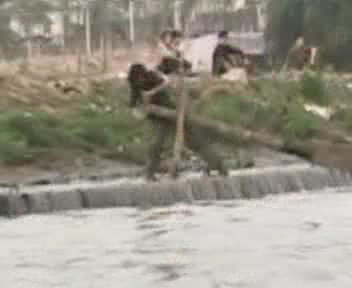
I will surely sail you into the Pacific Ocean
Video still
2005
Video, performance
3 minutes 52 seconds
Before the Beginning and After the End II
Tianzhuo Chen, Hu Xiangqian, Ran Huang, Liu Wei, Wang Jianwei, Wu Shanzhuan, Inga Svala Thorsdottir & Wu Shanzhuan, Xu Zhen, Xu Zhen produced by MadeIn Company, Zhan Wang, Zhang Hui, Zhou Xiaohu, Zhu Yu
2016.9.17-11.27
Long March Space, Beijing
Hu Xiangqian: A Performance a Day Keeps the Doctor Away
2015.6.6 – 8.9
Long March Space, Beijing
Before the Beginning and After the End
Chen Chieh-jen, Hu Xiangqian, Ran Huang, Wang Jianwei, Wang Sishun, Xu Zhen produced by MadeIn Company, Zhou Xiaohu
2014.9.2 – 11.2
Long March Space, Beijing
Hu Xiangqian: Protagonist
2012.7.1 – 8.12
Long March Space, Beijing
“Superfluous Gallery: Performance on Live”——Hu Xiangqian’s First Live Stream Event
Public Sector of Gallery Weekend Beijing 2020
2020.7.3, 8-9pm; 2020.7.4, 8-9pm
Other Lives of the Alternative Spaces
Hu Xiangqian
TAIKANG SPACE, Beijing, China
2019.6.27–2019.8.24
Remapping Reality— Selected Video Collection from Wang Bing
Ran Huang, Hu Xiangqian
OCAT Shanghai, Shanghai, China
2019.3.23−2019.6.16
DANCE WITH IT
Hu Xiangqian
TAIKANG SPACE, Beijing, China
2018.12.13−2019.3.2
chin(A)frica: an interface
Hu Xiangqian
The Institute of Fine Arts (The Duke House), New York, USA
2017.10.18 – 2018.2.18
Reciprocal Enlightenment
Hu Xiangqian
2017.1.14-2.19
CAFA Art Museum, Beijing, China
The Shanghai Biennale: Why Not Ask Again: Arguments, Counter-arguments, and Stories
Tianzhuo Chen, Hu Xiangqian, Liu Wei
2016.11.12-2017.3.12
Power Station of Art, Shanghai, China
Portrait Portrait
Hu Xiangqian
2016.9.8-2017.1.7
Taipei Contemporary Art Center, Taipei
Share/Cheat/Unite
Hu Xiangqian
2016.8.13-10.23
Te Tuhi, Auckland, New Zealand
Ensemble without Organs
Hu Xiangqian, “Xu Zhen”
2016.7.7-7.24
Centro de Arte Contemporáneo Wifredo Lam, Havana, Cuba
The Exhibition of Annual of Contemporary Art of China 2015
Tianzhuo Chen, Hu Xiangqian, Liu Wei, Zhu Yu
2016.6.25-8.22
Beijing Minsheng Art Museum, Beijing, China
What About the Art? Contemporary Art from China
Hu Xiangqian, Liu Wei, Wang Jianwei, Xu Zhen produced by MadeIn Company
2016.3.14 – 7.16
Qatar Museums Gallery Al Riwaq, Doha, Qatar
Bentu, Chinese artists in a time of turbulence and transformation
Hu Xiangqian, Liu Wei, Xu Zhen produced by MadeIn Company
2016.1.27 – 5.2
Fondation Louis Vuitton, Paris, France
Mobile M+: Live Art
Hu Xiangqian
2015.12.4 – 12.20
Sheung Wan Civic Centre, Connecting Space, Hong Kong, China
15 Rooms
Hu Xiangqian, Xu Zhen
2015.9.25 – 11.8
Long Museum, Shanghai, China
Asian Art Biennial: Artist Making Movement
Hu Xiangqian
2015.9.19-12.6
National Taiwan Museum of Fine Art, Taiwan, China
Back Home, Run Away: A Sample of Artistic Geography
Hu Xiangqian
2015.6.18 – 8.15
Taikang Space, Beijing, China
Essential Matters – Moving Images from China
Hu Xiangqian, Ran Huang
2015.4.4 – 8.23
Borusan Contemporary, Istanbul, Turkey
Gwangju Biennale: Burning Down the House
Hu Xiangqian
2014.9.5 – 11.9
Gwangju Biennale, Gwangju, South Korea
The Power of the Public Realm
Chen Chieh-jen, Hu Xiangqian, Liu Wei, Wang Jianwei, Yang Shaobin
2014.6.25 – 10.10
Beijing Minsheng Art Museum, Beijing, China
My Generation: Young Chinese Artists
Hu Xiangqian, Ran Huang, Xu Zhen produced by MadeIn Company
2014.6.7 – 9.28
Tampa Museum of Art, Florida, USA
Rubell Family Collection: 28 Chinese
Hu Xiangqian, Ran Huang, Liu Wei, Xu Zhen produced by MadeIn Company
2013.12.4 – 2014.8.1
Rubell Family Collection, Miami, China
Hu Xiangqian: A Looks Like B
Hu Xiangqian
2013.3.20 – 4.30
Arrow Factory, Beijing, China
Sharjah Biennial: Re:emerge, Towards a New Cultural Cartography
Hu Xiangqian, Liu Wei, Wang Jianwei, Yang Shaobin, Zhang Hui
2013.3.13 – 5.13
Sharjah Biennial, Sharjah, UAE
Baltic Triennial of International Art: Mindaugas
Hu Xiangqian
2012.8.24 – 9.9
Baltic Triennial of International Art, Lithuania
当感性假借理性掩面而示
2012_东方艺术大家_当感性假借理性掩面而示_文/王胤
天天表演,身体健康
2016_艺术世界_天天表演,身体健康_文/蔺佳
【AAC艺术人物】胡向前:表面已经足够发现所有
2016_雅昌艺术网_【AAC艺术人物】胡向前:表面已经足够发现所有_文/熊晓翊
Hu Xiangqian: A Performance A Day Keeps the Doctor Away
2015_randian_Hu Xiangqian/ A Performance A Day Keeps the Doctor Away_Interview/Yuan Fuca_Translate/Fei Wu
胡向前:天天表演 身体健康
2015_artforum_胡向前:天天表演 身体健康_文/杨北辰
胡向前:艺术是表演出来的
2015_Hi艺术_胡向前 艺术是表演出来的_文/史伟
对自我身体的管理与操演
2015_艺术世界_对自我身体的管理与操演_文/栾志超
我们在看什么展、什么表演?
2015_东方艺术大家_我们在看什么展、什么表演?_文/白江峰
[News] Hu Xiangqian, Xu Zhen, 15 Rooms, Long Museum, Shanghai
Courtesy of Action Media
Watch on V.QQ.COM
Courtesy of Action Media
[Exhibitions] Hu Xiangqian: A Performance A Day Keeps the Doctor Away, Long March Space, Beijing
Courtesy of Action Media
Watch on V.QQ.COM
Courtesy of Action Media
[Exhibitions] Hu Xiangqian: A Performance A Day Keeps the Doctor Away, Long March Space, Beijing (Preview)
Courtesy of Action Media
Watch on V.QQ.COM
Courtesy of Action Media
“For me, performance has always been an important way for me to look at myself objectively. Because I have a pair of eyes above me, hanging in the air watching me at all moments. It is as if there was someone else watching me, like an onlooker watching me, reality becomes a stage, a performance during which I care about nothing else at all.”
–Hu Xiangqian
Hu Xiangqian (b. 1983) was born in Leizhou, Guangdong Province and graduated in 2007 from Guangzhou Academy of Fine Arts. He currently lives and works in Guangzhou. Hu’s artistic practice is grounded in performance and video works documented with an intentional amateurishness and crudeness. His inspirations and motivations arise from his immediate surroundings, his intuition, and his artistic contemplation of what it means to be an artist. His work highlights the contrasts in our society and amplifies minor incidents into major social signifiers. In his words, he does not consider what he does to be the making of performance art; rather he focuses on the act of performing itself. He bluntly and genuinely pursues possibilities of experiencing an intangible reality. Through their absurd characteristic, his works are often very humorous whether it is his months-long attempt to tan his skin the same shade as his African friends in Guangzhou in Sun (2008), or the ubiquitous green man and red man of pedestrian traffic lights dancing together on the street in Two Men (2008).
Xiangqian Museum (2010-2012) is a collection of artworks that exist in Hu’s mind. Selected artworks from the museum’s collection are presented and performed through the artist’s body in the format of a curated group show, solo show, or even permanent museum collection. Xiangqian Museum is non-materialistic. The artist believes that art exists through his performance without physical form, as he said: “I think the best thing about art is that we are able to carry it around wherever we go.”
Hu adopts elements of Opera in The labor Song I Night (2012), particularly in the exaggerated vocal and physical gestures of the actors in the video. Fitted in bespoke costumes made to resemble a grand version of the uniforms commonly seen on security guards of a typical upper-middle class apartment compound in China, the actors are crammed into a small security booth, delivering an operatic performance that appears to be ludicrous. The content of the “opera” revolves around the generic but popular theme of dream and reality permeated with a sense of helplessness, but in the end, the contradiction between one’s dream and reality gets resolved.
Speech at the Edge of the World (2014) is the video work that was shown for the first time at the 10th Gwangju Biennale. In the video, Hu delivers an inspirational speech to an audience of two thousand middle and high school students in his native Leizhou dialect on the outdoor sports ground of the artist’s alma mater in Leizhou, a small village at the southern tip of Guangdong province. The speech lasts a little more than ten minutes. Hu takes elements and techniques from “motivational speeches”, for example, the tonal adjustment of the voice, the hand gestures, when to pause…, and adapts them to his style. He draws from his personal experience growing up on the Leizhou Peninsula (the locals nicknamed it “the world’s end”), speaking passionately about the importance of acquiring knowledge and the endless possibilities of life beyond the village.
In his latest major work Reconstructing Michelangelo (2015), Hu ponders: “Can one train a performance artist?” Hu began working and living with an apprentice a year ago, resulting in a six-channel video installation, an artistically edited representation of a “training program,” where the spirit, knowledge, experience, and physical fitness of what Hu thinks make a performance artist were passed on to the apprentice. The artist created a scenario where, on a daily basis, he was required to rethink the essential questions – what does it mean to perform, and what does it mean to be an artist?

